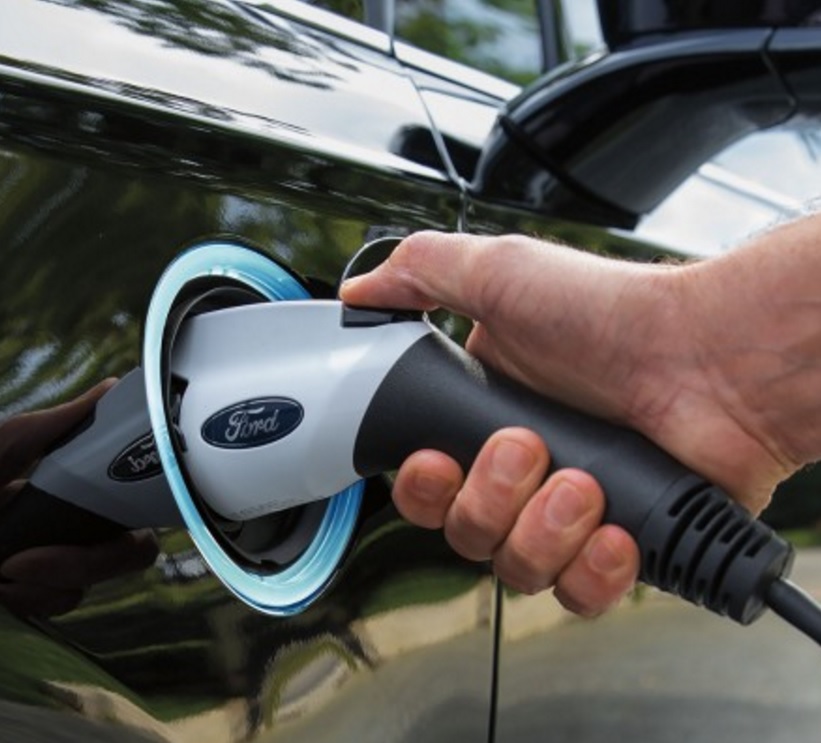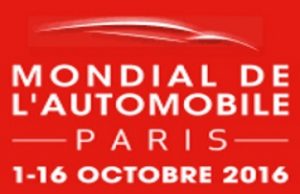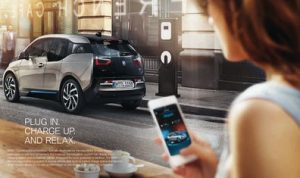A well-known automotive market analyst last year told me that he expects sales of battery electric and plug-in hybrid vehicles to make up 10% to 15% of U.S. new vehicle sales about a decade from now. That will mean that plug-in vehicle sales will have a real impact on manufacturing, marketing, infrastructure, and aftermarket products and services. The days of early adopters have come to an end, and the next phase is beginning – as made evident yesterday by announcements from General Motors and Ford Motor Co.
GM plans to launch 20 new electric vehicles by 2023. Two new all-electric cars will come out in the next 18 months. Whether that’s coming from upcoming fossil fuel bans in several countries, the popularity of  Tesla, China’s new energy vehicle market, launching the Chevy Bolt, the emergence of other long-range all-electric vehicles, and a long list of EVs in manufacturer product pipelines, the future is here now.
Tesla, China’s new energy vehicle market, launching the Chevy Bolt, the emergence of other long-range all-electric vehicles, and a long list of EVs in manufacturer product pipelines, the future is here now.
“General Motors believes in an all-electric future,” said Mark Reuss, GM Product Development, Purchasing and Supply Chain EVP. “Although that future won’t happen overnight, GM is committed to driving increased usage and acceptance of electric vehicles through no-compromise solutions that meet our customers’ needs.”
The automaker is also developing hydrogen fuel cell technology as part of its zero emission vehicle drive. One of these is the Silent Utility Rover Universal Superstructure (SURUS), a four-wheel drive concept vehicle that runs on fuel cells. These provide power to electric motors, making it an ideal ZEV platform for delivery trucks, ambulances, and other applications. Yet EVs will be gaining most of the automaker’s focus and support.
Ford is on track to deliver 13 electrified vehicles over the next five years. Seven have been announced, including a 300-mile range crossover EV that will come out in 2020.
Sherif Marakby, Ford’s head of electrification and autonomous vehicles, said that the automaker will increase the number of all-electric vehicles it will offer, but did not provide details.
Ford is establishing an internal team its calling “Team Edison” to study and develop battery electric cars.
“We see an inflection point in the major markets toward battery electric vehicles,” Marakby said. “We feel it’s important to have a cross-functional team all the way from defining the strategy plans and implementation to advanced marketing.”
Here’s my take on a few trends and developments to watch for:
- Battery electric vehicles will likely win out over plug-in hybrids in the next decade. While the Chevy Volt and Toyota Prius Prime will continue to do well, automakers tend to use plug-in hybrid variations of existing models as a way to transition car owners over to plug-in vehicles. EV range will be getting better, and all-electric vehicles are easier to maintain and keep in operation than internal combustion engine vehicles and plug-in hybrids. They use a lot less parts and components and are easier to maintain. Tires and brakes have to be replaced but there isn’t much else to changeover, given that the electric drive train is well made for EVs that are strong in sales.
- Tesla is playing a leading role in public perception and experience with the technology. The Tesla Model 3 is expected to play a leading role in mass adoption, but the upcoming Model Y electric crossover will be built at mass scale, too. There will be other models coming out including the semi truck aimed at buyers of heavy-duty commercial vehicles. Tesla’s stock performance continues to stay strong and validates that institutional and individual backers believe in the business model. (As a side note, GM and Ford stock prices did well after announcing strong September sales and serious electrification campaigns.)
- German automakers may be just as important as Tesla in moving the product development and sales trend forward. Volkswagen, Daimler, and BMW made big announcements a year ago in the wake of the “Dieselgate” scandal, and with growing pressure from German regulators and from a few other countries. Tesla was taking the lead in the luxury EV side, but an impressive list of pre-orders on the Model 3 opened up the playing field. The product pipeline is covering the bases from Tesla-competitive automakers – electric sedans, SUVs and crossovers, and luxury vehicles.
- Car buyers want to see realistic, real-world numbers on per-charge driving range, charging time, fast charging, option and trim levels, resale value forecasts, top speeds, horsepower, and torque. U.S. Environmental Protection Agency range ratings are gaining more confidence than the New European Driving Cycle (NEDC), with the NEDC using a very different cycle analysis and much longer range.
- Hydrogen fuel cell vehicles won’t reach mass adoption, with EVs winning out. They won’t be going away, with automakers such as Toyota, GM, Honda, Hyundai, Daimler, and BMW committed to the technology. They’ll probably stay at a low level in passenger vehicle sales with a few of the automakers going over to military and commercial vehicle applications. But the barriers will be hard to cross – having enough fueling stations, the cost of the technology and sticker prices coming way down, and finding broad support and trust in the technology. The typical pump price for fueling with hydrogen isn’t known yet, and concerns are being expressed on how expensive it will be to collect and extract hydrogen from natural gas and other sources; and to deliver it by truck and pipelines to gas stations. The ZEV aspect makes hydrogen fuel cell vehicles very attractive, but where is the hydrogen coming from? And EVs are getting cheaper and better all the time, along with the charging infrastructure.
- Countries adopting fossil-fuel bans will likely have to back off those holistic mandates. It’s much more likely to take several more years (another half century?) before ZEV adoption becomes accepted at that level. It will be tied into radical transformation in how we drive and get around town. An integration of autonomous vehicles, mobility services, and electrification will be behind it, but that is going to take decades to meet thorough testing and safety standards, insurance and liability issues, and to gain enough confidence and trust to reach mass scale. I expect that governments will go back to mandating a certain percentage of new vehicle sales meet their mandates; incentive programs will probably have to be deployed in China and other markets.
- There’s also the issue of fleet and commercial vehicles used in transport, delivery, and moving employees and customers from Point A to Point B. Fleets are likely to integrate the fuels and technologies – with trucks and buses powered by renewable natural gas and renewable diesel, electrification, and propane and natural gas; and hybrid, plug-in hybrid, and all-electric passenger vehicles used by law enforcement agencies, administrative vehicles, and other functions. Fleet operators make decisions based on economic and environmental factors, along with functionality and ease of use, as do consumers.

 As previewed last week, the Paris Motor Show has gone through a do-over – what was once the hallmark auto show for high-performance luxury and sports supercars (with many of them powered by diesel engines) is now shifting over to electric cars as the stars of the show. Crossover utility vehicles with battery power is another trend noticed by observers.
As previewed last week, the Paris Motor Show has gone through a do-over – what was once the hallmark auto show for high-performance luxury and sports supercars (with many of them powered by diesel engines) is now shifting over to electric cars as the stars of the show. Crossover utility vehicles with battery power is another trend noticed by observers.
